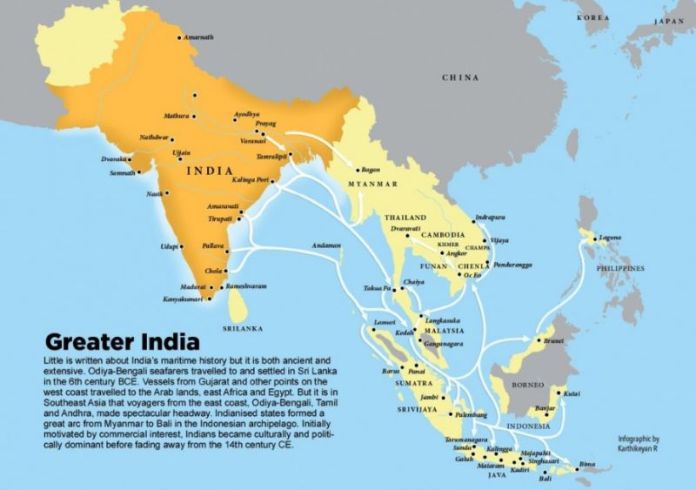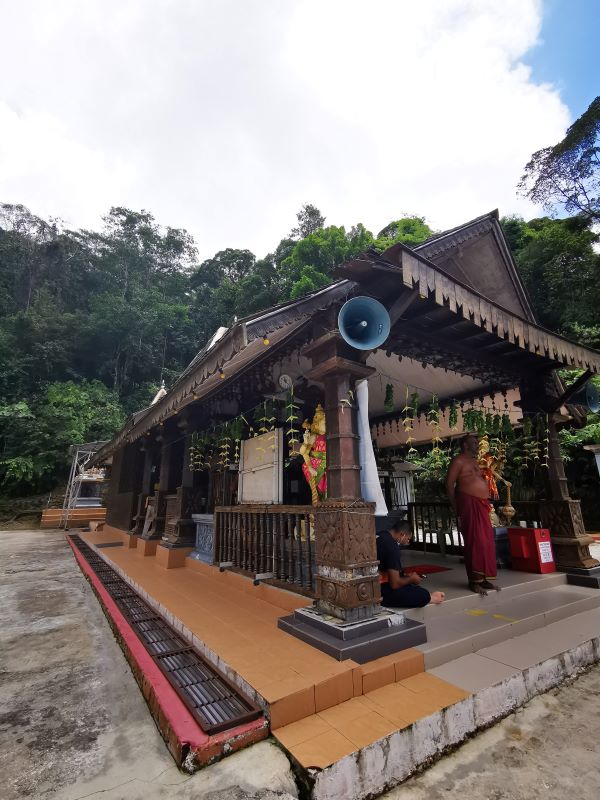
By Anita Majumder–MacGillivray
REFERRED to as ‘dan lain-lain” (others) in all official forms in Sarawak until recently, the Sarawakian Indians—though a smaller ethnic group—have existed in Sarawak for quite a while and have contributed much into this big melting pot of wonderful and varied heritages which makes up Sarawak.
For many readers, this article may conjure up nostalgic memories, and for others, may be a bit of an eyeopener about the Indians in the State.
History
Around the 11th century, the influence of Buddhism and Hinduism was prevalent across the whole of South-east Asia, affecting how people lived, political structures and social organisations. Borneo Island and our Sarawak of today was an integral part of it. Indian influence came to this part of the world through small groups of traders and missionaries. It is thought that Indians arrived in Borneo at least as early as the 5th century A.D. This influence introduced language, art, textile into Sarawak. There are relics of Hindu temples in Santubong area.

The ancestors of the present-day Indians in Sarawak came from the pool of Indian immigrants who arrived in the 19th century, during the Rajah’s reign—the Tamil South Indian Muslims came as merchants, the Punjabi Sikhs came as the police force and the Tamil South Indian Hindus came as workers to run the Rajah’s Matang tea and coffee estate.
Around 1912, the tea plantation closed, and the Indian labourers were given the choice to return home or accept other jobs. Most choose to return home. Only around 40 families stayed. The majority of the Indian community in Sarawak are the descendants of these families who stayed.
In 1968 discovery was made of a Hindu Sri Maha Mariammam temple built most probably around 1890 at the centre of the Rajah’s tea plantation. This has now been restored and renovated and well worth a visit.

The Sri Maha Marriamman Temple at the junction of Batu Lintang and Rock Road in Kuching, even though an unimpressive structure architecturally, is one of the oldest temples in Sarawak. A new temple has been constructed to replace it on Rock Road next to the “rock” which gives the road its name. The deity inside was transferred from the then abandoned temple in the Matang Tea Estate. Originally it was brought from India in 1890. The Sri Srinivasagar Kaliamman Temple at Ban Hock Road is believed to have been in existence more than 100 years.
Though Indian Muslims have been coming to Sarawak for a long time, they were more transient in nature—traders who came and went. It is assumed that the Indian Muslim community in Sarawak began at least 175 years ago.
By 1929 there were Indian Muslim merchants in Kuching, Serian, Sibu, Saratok, Betong, Mukah, Bintulu, Lawas, Miri and Limbang. They were mostly Tamils Muslims who were bachelors or left their family in India but since 1953, Indian Muslims have been bringing over their families and making more permanent homes in Sarawak.
India Street was so named as it is where they plied their trade. By 1840, there was already a prayer hut for use of Indian Muslims. On December 27, 1871, Rajah Charles Brooke sold the piece of land on which the surau stood for sixty dollars to the Indian Muslim community for the purpose of building a major mosque for “inhabitants of Sarawak who profess Mohamadean religion not being Malays”.
The mosque was reconstructed in 1876. And this is the mosque that is tucked in between Indian Street and Gambier Street and there is a passageway linking the two streets running beside the mosque. I’m sure many of us have walked down that passage without really knowing the history of the place.

This mosque has now been replaced by the new ‘Floating Mosque’ on the waterfront on Gambier Street, but the old mosque is still standing.
The contributions of the Indians to the cultural landscape of Sarawak can be broadly divided into 3 catagories—textiles/dress, education and food.
Textiles
So many of us still remember going to India Street—all those Indian Muslim traders setting up shop and get a whole street named after them–to No 27, Salleh Ahmad, either to get school uniform material or to get some fabulous piece of cloth to have our Raya, Gawai, Christmas, birthday outfit/clothes made.


Mr Salleh Ahmed has been now made immortal alongside Mr Choo Nam Kee in the mural painted on the walls at the head of India Street!


Ready-made clothes were not so readily available here then and the Chinese tailors were kept pretty busy sewing all types of clothes from all the materials bought from India Street. The style of ‘baju kurong’ is very similar to the ‘kurta’ of India.
The other influence of Indian textiles has always been in the weaving. Sarawak Pua Kumbu has very strong ties in its method of weaving with the Indian Patola weave, so somewhere in the past when the Indians travelled over South-East Asia, they brought their skills and passed them on.
Kain Songket is another artform with strong Indian influences in the weaving technique. Keringkam—the beautiful flat gold thread embroidery done on scarves and decorative piece in Malay dress—is another Indian influenced textile. Even today the flat gold thread is imported from India and so was the fine cotton or silk gauze material used in the past.
The main area in India where Indian influence came from in the past was called Kalinga, hence the word “Kling” or “Kelenga” for an Indian or Indian goods i.e. “Pisang Kling” or “kelengchio”. The name ‘Keringkam’ is thought to be a localised version of “Kelingkam”, that is ‘Keling’ = Indian, ‘kam’ = work.
Education, Health and Engineering
There was a need for skilled personnel in both Education, Health, and the Public Works Department (PWD)— and they were brought in from India.
For many of the educated people in India, jobs were scarce and salaries very low. Indians were ready to go to countries that were waiting for their services. The same services were available from developed European countries, but the cost was very high. The connection of all being British Colonies was an added bonus.
After WWII, contracted services and expatriates in mainly those three areas started to arrive in Sarawak in large numbers. Many came here through the British Colonial Services and stayed, taking on Sarawak/Malaysian nationality. Many Sarawakians, especially of the older generation, have been taught and treated by Indians in schools, clinics and hospitals.
And we still do today as the next and newer generations of now Sarawakian Indians continue in these professions. Many Sanskrit/ Hindi words were introduced into local languages, mainly Bahasa Melayu. Some common ones include ‘bahasa’, ‘bandar’, ‘bumi’, ‘desa dobi’, ‘dunia’, ‘almari’, ‘kepala’, ‘maha’ and ‘nama’ to name just a few!
Food
Now we come to one of the bigger influences that the Indians have had here! Just walking down Gambier Street today one can still see all the old spice shops plying their trade – and the customers are not just the Indians living here!

Every major wet market in Kuching—Stutong, Petanak, Kubah Ria MJC, 3rd Mile Market, Kota Sentosa (7th Mile)—will have at least one Indian trader selling spices. Gambier Street Spice Alley is still going strong.
Several common Malay dishes—rojak, sup kambing, roti canai, teh tarik and nasi minyak—started life as Indian Muslim dishes.
Actually in Sarawak before the late 1980s, there were very few Indian restaurants in Kuching—just two in India Street—serving Indian Muslim food, and Bukhari Cafe in Satok serving curries and great Biriyani, was all.
Roti canai arrived in Kuching in the late 1980s as did naan and tandoori. Today one can go to any suburb of Kuching and be near an Indian restaurant or cafe and get their dose of curry! Many of the places one goes to today serving roti canai are not Indian establishments but Malay.
Other customs which have Indian influence: Decorative items made from leaves of coconut palms, lotus motifs, use of enai/henna in colouring hands and fingers, sprinkling of perfumed water, ‘bersanding’ ceremony, offering flowers, incense, jossticks, greeting with folded hands, and lighting during Hari Raya Aidilfitri.
“Dan lain-lain” Indians contributed strongly to the multiracial background of Sarawak and the cultural heritage, traditions melding with all the other traditions found here and can be rightly called Sarawak Indians!
Anita Majumder–MacGillivray is one of those Sarawak Indians as well as a keen student, collector and sharer of culture, heritage and all things that help define us. She is a founding member of Friends of Sarawak Museum.
“Heritage Snippets from Sarawak” is a fortnightly column.








